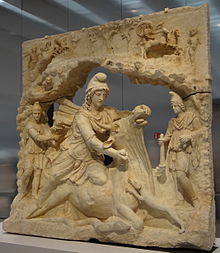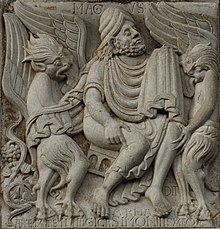|
Lost Hearts
   "Lost Hearts" is a ghost story by British writer M. R. James, originally published in 1895. It was later collected in his 1904 book Ghost Stories of an Antiquary. Plot summaryThe tale tells the story of Stephen Elliott, a young orphan boy, who is invited to stay with his much older cousin, Mr Abney, at a remote country mansion, Aswarby Hall, in Lincolnshire. His cousin is a reclusive expert on the magico-religious practices of late antiquity who is obsessed with the gaining of occult powers and the acquisition of immortality. Stephen is repeatedly troubled by visions of a young gypsy girl and a travelling Italian boy with their hearts missing. The occult scholarship of Mr. AbneyIn keeping with the antiquarian interests and considerable personal erudition that this author brings to bear in the settings which he creates for his stories, James provides a considerable amount of background information regarding the field of study of the ruthless and unprincipled classical scholar Mr. Abney - who regards the child murder of orphans as no more than a means to a (black) magical end. Abney's scholarship encompasses the belief systems of Neoplatonism, the mystery religions of late antiquity - notably Mithraism and Orphism, as well as the pseudoscience/mystical system of alchemy. In the course of the story, Abney mentions not only Censorinus, author of the treatise De die Natali (trans. "Concerning birthdays"), but also the mythical founder of Alchemy Hermes Trismegistus and the biblically attested magician, and founder of a gnostic sect, Simon Magus.
According to the Early Christian/Gnostic religious romance the Clementine Recognitions (to which James makes his character refer in the second of the two passages quoted above):
Furthermore (and with particular relevance to the main theme of "Lost Hearts"),
the author of the Clementine Recognitions records an episode in which Simon made a familiar spirit for himself by conjuring the soul out of a boy and keeping his image in his bedroom.
AdaptationsThe story was first adapted for television by ABC and broadcast by ITV on 5 March 1966 as an episode of the Mystery and Imagination series. However, no archive recordings of this episode are known to exist and it is considered lost. "Lost Hearts" was adapted by Robin Chapman in 1973 as part of the BBC's A Ghost Story for Christmas strand, directed by Lawrence Gordon Clark. The shortest of the adaptations, Lost Hearts was first broadcast on Christmas Day 1973 at 11:35 pm.[4] It starred Simon Gipps-Kent as the orphan Stephen and Joseph O'Conor as the much older cousin. The adaptation is noted for the distinctive hurdy-gurdy music that accompanies appearances of the two ghostly children. Ralph Vaughan Williams' English Folk Song Suite is also featured. Now curated by the British Film Institute, this version of Lost Hearts has been released on DVD sets with other entries in the strand and in December 2022 on Blu-ray. In 2018, a third film adaptation[5] of the short story was released by Severn Film Productions[6] in association with Action Image Productions,[7] co-written by Lynn Davies and directed by Max Van De Banks. The production features Nicholas Amer as Mr Abney, Louis Newton as Stephen Elliott, Margaret Baldwin as Mrs Bunch, Mark Llewellin as Mr Parks and Eleanor Catherine Smart as Emily. The film was shot on location at Eastnor Castle and Hellens Manor in Herefordshire and the Gloucestershire Warwickshire Steam Railway. The story is updated to the 1940s (and later 1953) when, following the death of Stephen's parents, the young boy has been evacuated to the countryside during World War II. This production is unusual in that the film was shot in two parts, with the main elements being filmed in 2005 and the beginning and end of the film in 2016, with Louis Newton returning as Stephen, now a young man recounting to his bride-to-be the story of what happened ten years earlier. The film was entered in The Bristol International Film Festival[8] and received a nomination at the Moving Pictures Festival in Nieuwmoer, Belgium in 2018.[9] References
External links
|
||||||||||||||||
